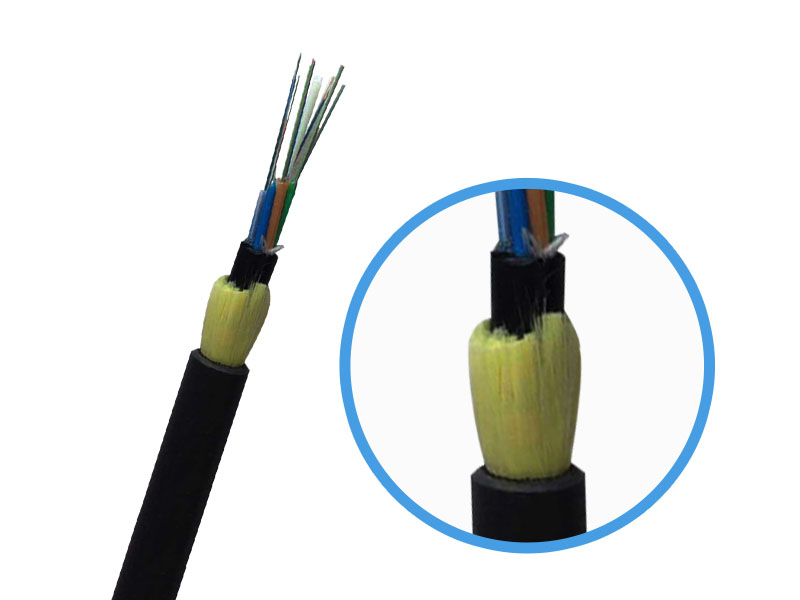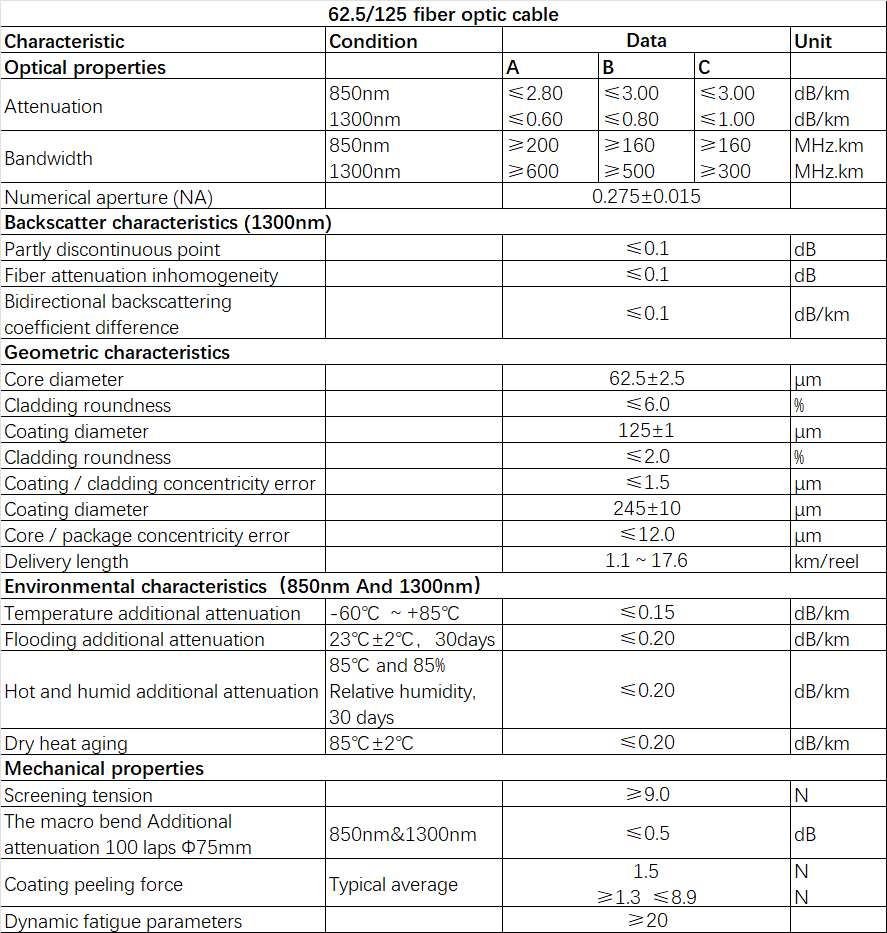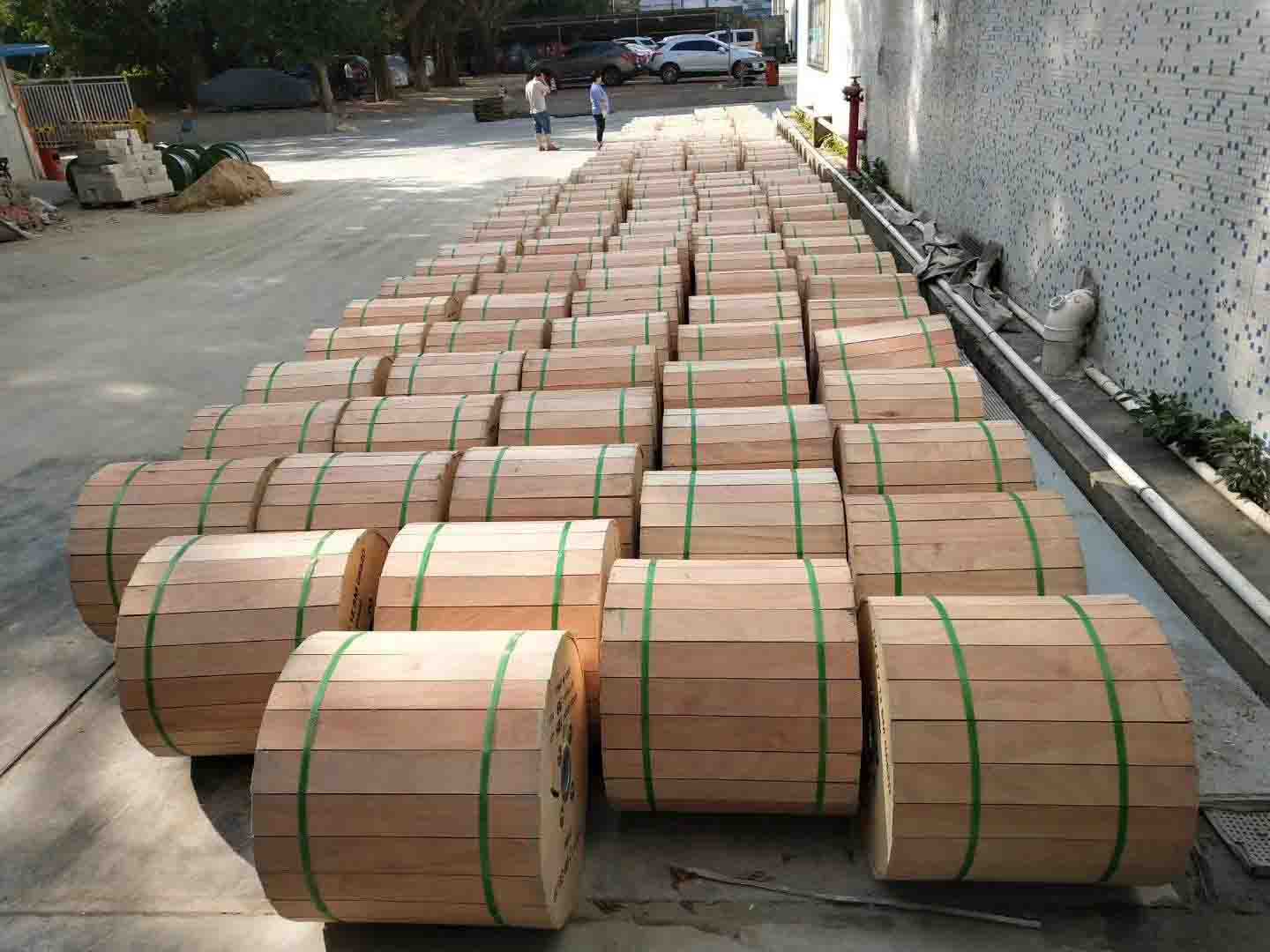
ADSS (All-Dielectric Self-Supporting) fiber optic cables are specialized optical cables designed for overhead installations in which they are hung between utility poles, transmission towers,or other support structures.
Operating temperature:-40℃~65℃
Characteristic:All Dielectric
Cable Type:Stranded Loose tube ADSS Cable
Jacket Material:Polyethylene (PE) | AT(anti-tracking)Sheath
Fiber Count:12-144Core
Subunit Type:Gel-filled
Environmental Space:Self-supporting Aerial
Armor:Aramid Yarn| KEVLAR
Standards:Comply with standard IEC 60794-4、IEC 60793、TIA/EIA 598 A.
Product structure:PBT loose tube,non-metallic central reinforcement (FRP),PE inner sheath,aramid fiber layer,PE outer sheath or anti-tracking outer sheath
Applications:Self-support Aerial Installation,Used for communication lines in overhead high-voltage transmission systems,lightning-prone areas,large-span and other overhead laying environments.
Fiber Type: G652D;G655C;G657A1;G657A2;50/125;62.5/125;OM3-150;OM3-300;OM4 As Options

1、**Telecommunications Networks:** ADSS cables are widely used in telecommunications networks to provide high-speed data transmission over long distances. They are commonly deployed in both urban and rural areas to establish reliable communication links.
2、**Broadband Networks:** ADSS cables play a crucial role in broadband networks, including fiber-to-the-home (FTTH) and fiber-to-the-business (FTTB) installations. They enable the delivery of high-speed internet and other broadband services to end-users.
3、**Power Utility Communication:** ADSS cables are used in the power utility industry for communication purposes. They provide a reliable means of monitoring and controlling the electrical grid, enabling utilities to manage power distribution efficiently.
4、**Smart Grids:** In the context of smart grids, ADSS cables facilitate communication between various components of the grid, such as sensors, meters, and control systems. They contribute to the implementation of advanced monitoring and management capabilities.
5、 **Transportation Infrastructure:** ADSS cables are deployed along highways, railways, and other transportation corridors to support communication networks for traffic management, surveillance, and other applications related to transportation infrastructure.
6、**Security and Surveillance Networks:** ADSS cables are used for the deployment of fiber optic networks supporting security and surveillance systems. They provide high-speed data transmission for video surveillance, access control, and other security applications.
7、 **Industrial Automation:** In industrial settings, ADSS cables may be used to establish reliable communication networks for industrial automation systems. They support the transmission of data for monitoring and controlling manufacturing processes.
8、**Rural Connectivity:** ADSS cables are employed to bring high-speed internet and communication services to rural and underserved areas. Their self-supporting design makes them suitable for installation in various terrains.
9、**Disaster Recovery Networks:** ADSS cables are used in disaster-prone regions to establish resilient communication networks. They can withstand adverse weather conditions, making them suitable for emergency and disaster recovery applications.
10、**Military and Defense Networks:** ADSS cables may be utilized in military and defense applications where secure and high-bandwidth communication is crucial. They can be deployed in various environments, including military bases and strategic locations.
11、**Environmental Monitoring:** ADSS cables support the deployment of fiber optic networks for environmental monitoring applications. They enable the transmission of data from sensors used for monitoring air quality, water quality, and other environmental parameters.
12、**Oil and Gas Industry:** ADSS cables may be used in the oil and gas sector for communication purposes, supporting operations such as pipeline monitoring, offshore drilling, and remote facility management.



1、Self-Supporting Design: ADSS cables are designed to be hung directly between utility poles or other support structures without the need for a separate messenger wire or metallic conductor. This makes installation simpler and more cost-effective.
2、Dielectric Construction: ADSS cables are made entirely of dielectric (non-metallic) materials. This design makes them suitable for use in high-voltage environments, as they do not conduct electricity and pose no risk of electrical interference.
3、Lightweight: ADSS cables are generally lighter than traditional metallic cables, making them easier to handle and install. The reduced weight also contributes to lower stress on support structures.
4、Low Maintenance: Due to their construction and design, ADSS cables are often low maintenance. They are resistant to corrosion and environmental factors, reducing the need for frequent inspections and repairs.
5、Weather Resistance: ADSS cables are designed to withstand various weather conditions, including high winds, ice, and exposure to UV radiation. The outer sheath is typically UV-resistant to protect against sun damage.
6、Flexibility: ADSS cables are flexible and can be installed in a variety of environments, including urban and rural areas. They can be routed along existing infrastructure, such as power lines and utility poles.
7、High Tensile Strength: ADSS cables incorporate strength members, often made of aramid or fiberglass, to provide the necessary tensile strength. This allows them to withstand mechanical stresses such as wind, ice, and other environmental factors.
8、Broad Applications: ADSS cables are used in a range of applications, including telecommunications, broadband networks, and power utility communication systems. Their versatility makes them suitable for diverse scenarios.
9、Reduced Installation Costs: The self-supporting nature of ADSS cables eliminates the need for additional support hardware, reducing installation costs. They can be installed quickly and efficiently in various settings.
10、High-Speed Data Transmission: ADSS cables are capable of carrying high-capacity data signals over long distances, making them suitable for applications that require high-speed data transmission, such as broadband networks.
Standard length:2000m, other lengths are also available
